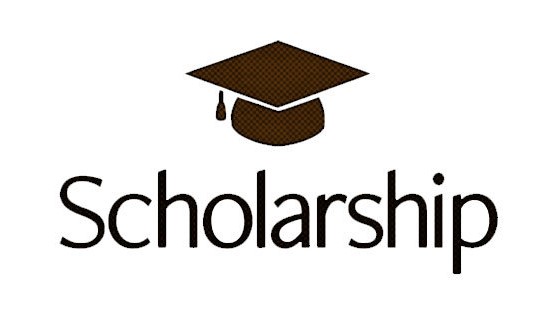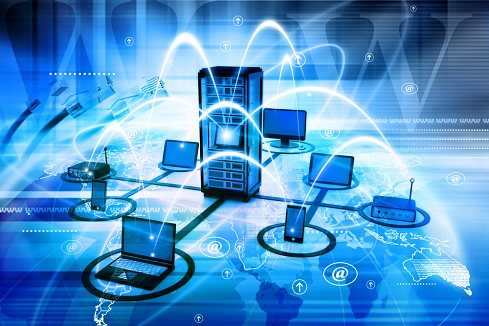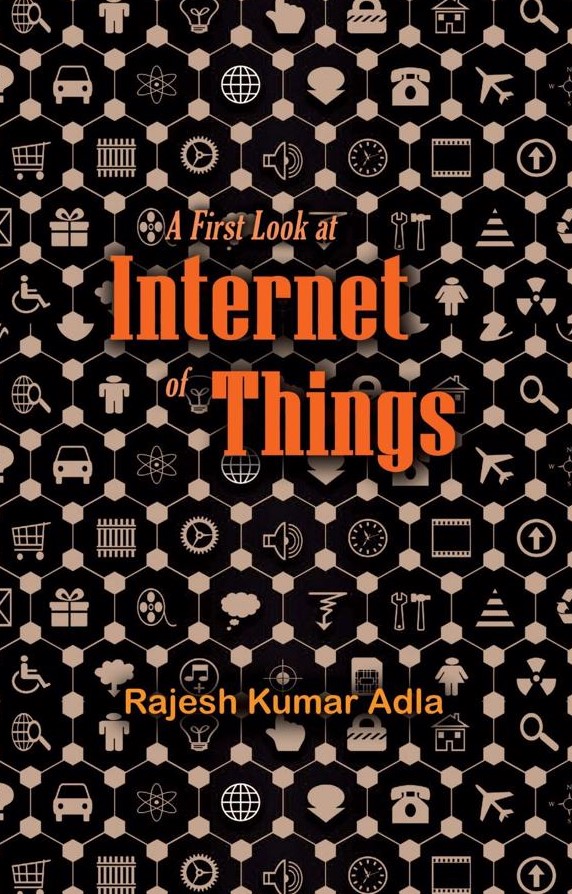Advanced IoT
Superior Training Methodology
ABOUT THE COURSE
Internet of Things (IoT), is an ecosystem or network of connected physical objects, including devices, gateways, machines that are accessible through internet. Amazon Echo, Google Home and Nest Thermostat are most popular Internet of things products.
Internet of Things, program is specifically designed with an objective to provide a sound platform and prepare attendees for a successful career in the field of Internet of Things (IoT) Design. The course content, the advanced lab, 1:5 classroom strength allows special focus on individual performance. We provide in-depth insights into IoT Stack, IoT Hardware, IoT Device Software, IoT Communications, IoT Cloud, and IoT User Applications. Embedded Linux, and Debugging Techniques.
QUALIFICATIONS
Aggregate 60% marks or above in a Graduate degree (BE/B.Tech. or M.Sc) in Electronics Engineering & Telecommunication/ Electrical engineering/ Computer Science & Engineering/Instrumentation or Master of Computer Applications (MCA). (Students of 4th year engineering are also eligibile).
TRAINERS
Trainer, have tons of research and product development experience in IoT, along with a M.S in Electrical Engineering (USA). He worked with top companies including Nest, Amazon in USA and has extensive experience designing and validating IoT platforms. He managed technical teams, which delivered top class Internet of Things (IoT) products.
SELECTION
The course consists theory and practical classes spread over a period of about 15 weeks. The course will have about 100 contact hours and also hands-on practical lab sessions. Design project will be done in the time allotted for lab sessions. In addition, there will be guest lectures by experts from industry and academic institutions. Each course batch is limited to first 15 participants. Participants have to appear for a test of duration 30 min in Digital Design and general aptitude, Followed by Interview. The batch size is kept to minimum, this enables us to focus more on each student so, that we help them understand the concepts in depth.
INTERNSHIP
IoT internships are designed for final year electronics / electrical engineering students of B.Tech/M.Tech/Phd (INDIA) and M.S/Phd (USA) and it starts with learning of concepts on IoT Architecture, Sensor & Actuator, Arduino Programming and IoT Protocols and Big Data which will be highly required to start an industry standard project. Doing this internship will make you a hands-on IoT Protocol Designer or hands-on Big Data Engineer.
RESEARCH
IoT research projects are designed for final year electronics / electrical engineering students of B.Tech/M.Tech/Phd (INDIA) and M.S/Phd (USA) and it starts with learning of concepts on IoT Architecture, Sensor & Actuator, Arduino Programming and IoT Protocols and Big Data which will be highly required to start an industry standard project. Doing these research projects will make you a hands-on IoT Protocol, Big data experience suitable for industry and MS/Phd studies.
KEY FEATURES

1. 24×7 Support on exercises.
2. Case studies
3. 4.7/5 rating
4. Industry standard tools
5. Two decade of experience
6. World class course structure
7. Expert mentorship on IOT career
8. 100% Placement Support
9. Lifelong membership

1. Scholarship will be provided based on online test and technical interview performance.
2. Candidates with score 80% in Engineering and 90% above in online test will be selected.
3. Candidates with good GATE score can avail additional scholarship.T&C Apply
INFRASTRUCTURE

1. ARM Cortex Board
2. Arduino Board
3. Raspberry Pi Mod-4 IoT Board
4. Arduino Uno Board
5. ARM Cortex starter kit
6. Xilinx SPartan-6 starter kit
7. Xilinx Zync starter Kit
8. 100+ Variety of Sensors, PIC and Rabbit 5000 Microcontrollers
COURSE CURRICULUM
- What is Internet of Things?
- How Internet of Things is applied in different domains?
- Use cases ranging from Smart Cities to IIoT
- How large is the Internet of Things Market in different domains?
- Internet of Things Technology stack
- Sensors & Actuators
- Hardware Platforms
- Wireless Communication Protocols
- Network communication Protocols
- Cloud, its components and IoT
- Data Streaming in IoT
- Data Store and IoT
- Analytics & Visualization for IoT
- What is Sensor & Actuator?
- What is a good sensor?
- Sensor properties and their classification
- Types of Sensors & Actuators
- Working of typical Sensors and Actuators
- Categories of sensors Commercial/Industrial/Military/Medical/Food grade sensors
- Selecting a sensor for your use case
- IoT Hardware Platform & comparison
- Criteria for selecting Hardware platform
- The Raspberry Pi and Arduino Open Source Microcontroller Platform
- Schematics, PCB Design Tools and prototype steps
- Raspberry Pi and Arduino Board Layout & Architecture
- Why Raspberry Pi and Arduino?
- How to program Arduino with Arduino IDE
- How to make your Arduino respond to sensors and actuators
- Reading data from analog/Digital Sensors
- Writing data to analog (PWM)/Digital actuators
- Connecting sensors to Arduino to read data from sensor and display on serial monitor (Temperature, Humidity, Distance, Light, Moisture, Gas (Methane/Alcohol), Proximity, Motion).
- Connecting actuator to Arduino and controlling Actuator (LED, Relay, Push button, Buzzer) Controlling a motor (actuator) by sensing Temperature
- Controlling a buzzer using Ultrasonic ranger
- PIR (Human presence) (Combining sensors to avoid false alarms)
- Controlling sprinklers using relay by sensing moisture in the soil using moisture sensor
- Working with Raspberry Pi 3 Model
- Installing OS and Designing Systems using Raspberry pi
- Configuring Raspberry Pi for VNC Connection
- Getting introduced to Linux OS
- Basic Linux commands and uses
- Getting Started with Python
- Variables, Functions and control Structure
- File Handling in Python & Importing or Exporting Data
- Interface sensor and Actuator with Raspberry Pi
IoT Wireless Protocols
- RFID, NFC, Blue Tooth, BLE, ZigBee, Zwave Mesh network
- Comparison of wireless Protocols
- How to select a wireless Protocol based on use case
IoT Communication Channels
- Wi Fi, GSM/GPRS, 2G, 3G, LTE
- Comparison of Communication Channels
- How to select a Communication Channels based on Use Case
IoT Network Protocols
- MQTT/MQTTS, CoAP, 6LoWPAN, TCP, UDP, HTTP/s
Comparison of the Network protocols
- How to select a Network Protocol based on Use Case
Introduction to IPv4 and IPv6
- Issues with IPv4 in IoT
- How IPv6 solves the issues with IPv4
- Application issues with RF protocol
- power consumption, LOS,reliability,Security aspects
- Introduction of TCP & UDP
- Difference between TCP/UDP Transport layer protocol
- Practically testing the TCP v/s UDP by python socket programming
- Introduction and structure of HTTP protocol
- Start with HTTP protocol GET/POST Method
- Work on python Flask library design web page
- Control thing from webpage using HTTP protocol
- Publish sensor data over web server
- Introduction to MQTT
- Why MQTT?
- Features of MQTT
- MQTT Subscribe/Publish
- MQTT Broker
- MQTT QoS
- MQTT Security
MQTT with Raspberry Pi
- Installation of Mosquito MQTT broker
- Publish and Subscriber test on local server broker
- Start with Paho MQTT
- Publish/subscribe test on iot.eclipse platform
- Introduction of CoAP
- Architecher of CoAP IOT protocol
- Diffrence between HTTP & COAP
- Implement of CoAP using CoAPthon Python library
- Design server and client using Python
IoT Cloud Platform(Ubidot)
- Read data from sensors,
- Create JSON Object
- Establish HTTPS connection using Wi Fi
- Send JSON data to Ubidot Rest API over HTTPS
- Create business rules in Ubidot for alarms
- Send Data to Ubidot platform
- Create rule and configure Alarm(SMS/Email) for your device
- Send data to Ubidot which will trigger the alarm
- Create and configure Chart/Graph for visualization
- Control the actuator from Ubidot using polling technique
Cloud Computing
- What is cloud?
- What is cloud computing?
- Benefits of cloud.
- Deployment Models.
- Top cloud providers.
- Service Models
- Service Catalogue
- Advantages for different offerings
- Introduction to AWS
- Service provided by AWS E2C, SimpleDB RDS, Dynamo DB, Elastic Beanstalk, SNS, Cloud Watch, Route 53, VPC, Elastic Load Balancing, S3, EBS, IAM
BigData
- Cloud data storage
- Introduction to Big Data
- BigData Definition and Characteristics
- Who is Generating Big Data
- Big Data Analytics
- Why Big Data Analytics
- Applications of Big Data Analytics
- Different Data Stores
- Big Data Technologies CouchDB, MongoDB, Node4J
- Introduction to AWS IoT
- Creating a Thing in AWS IoT
- Downloading SDK and configuring RaspberryPi
Preparing the RaspberryPi to connect to AWS IoT
- Downloading Certificates from AWS IoT console
- Installing certificate in RaspberryPi
- Connecting Sensors to RaspberryPi II.
Connecting to AWS IoT
- Configuring RaspberryPi sketch to connect to AWS IoT through Wi Fi
- Establishing MQTT Connection
- Publishing Sensor data to AWS IoT Thing Shadow
- Subscribing MQTT Topic and controlling actuator from Thing shadow
Send Data from raspberry Pi to AWS IoT
- Run Ultrasonic ranger sketch in RaspberryPi and check
- Updating of data from RaspberryPi to AWS Thing Shadow
Dynamo DB
- Configuration of Dynamo DB
- Create table in Dynamo DB
- Create rule link dynamo DB with AWS IOT
- Store sensor data From AWS IOT in Daynamo DB
SNS
- Setup SNS service
- Test SNS service by publish/subscribe
- Create a rule and link with AWS IOT
- Notify through mail when Publisher publish data
Plot location and Route on Google map
- Based on condition plot locations of Smart Garbage Bin (node) with respective status of Garbage Bin i.e. empty / half /Full Garbage bin, on Google map
- Plot the optimized route for garbage collection truck route on Google maps

Frequently Asked Questions
Most frequent questions and answers
Can I get a job into IoT Industry, as I am fresh college graduate?
Yes, industry is hiring trained fresh college graduates for entry level jobs. Many of our students have got placed in top product and services companies. Along, startups are relying on new college grads for fresh ideas and out of box thinking.
Do you have a free demo session, to get a feel of the trainer and understand my choice of field better, before payment?
Yes. You are always welcome! Send us a query or call us. We will arrange a 1 to 1 meeting with the trainer and counselor. They explain you course content, job opportunities and prerequisites.
Can I get an internship, after the coursework? What do I need to ensure?
We are connected with companies focused on IT, Analytics, IoT, VLSI and Embedded. After every training session, we send our candidate profiles to these companies based on their interest. Companies interview and select the candidates of their choice. However, we try our level best to get you an entry into your dream job.
I am not from electronics, neither do I have a engineering degree. Can I join?
At industry, degree is no constrain, but Skill is. At design nation, qualification is not prerequisite, but passion is. If you are passionate to shine in the area of interest, come and talk to us. We are here to help you!
Do you provide a certificate after completion of the course?
Yes. We provide a certificate after the course completion. You can add it to LinkedIn profile, resume and mention during the interviews. Companies prefer trained resources than untrained candidates.
Can I avail the scholarship at Design Nation?
Yes, our scholarships are for people like you, with great talent and financial needs. We are more than happy to help you, with the process. Please check the cutoffs for scholarships in above section. We helped many, and still counting!!

